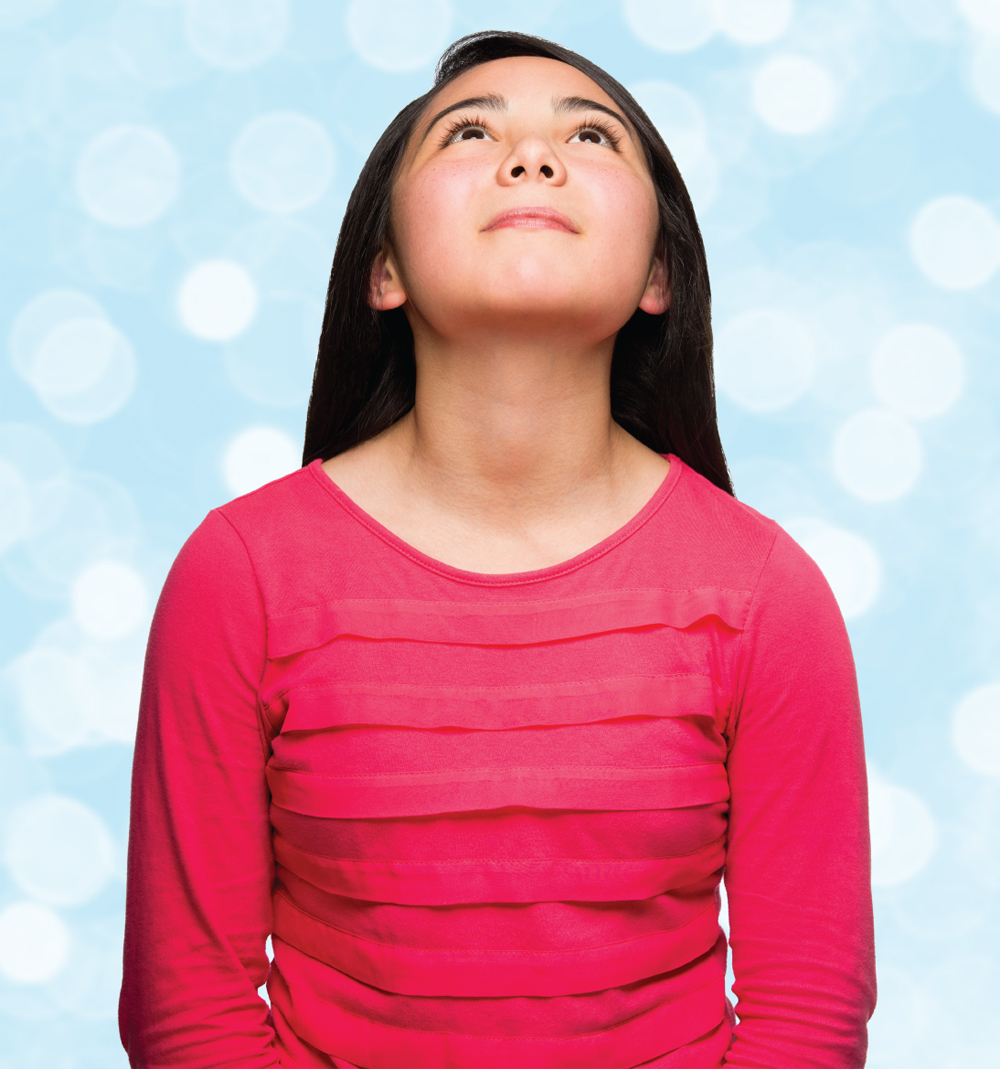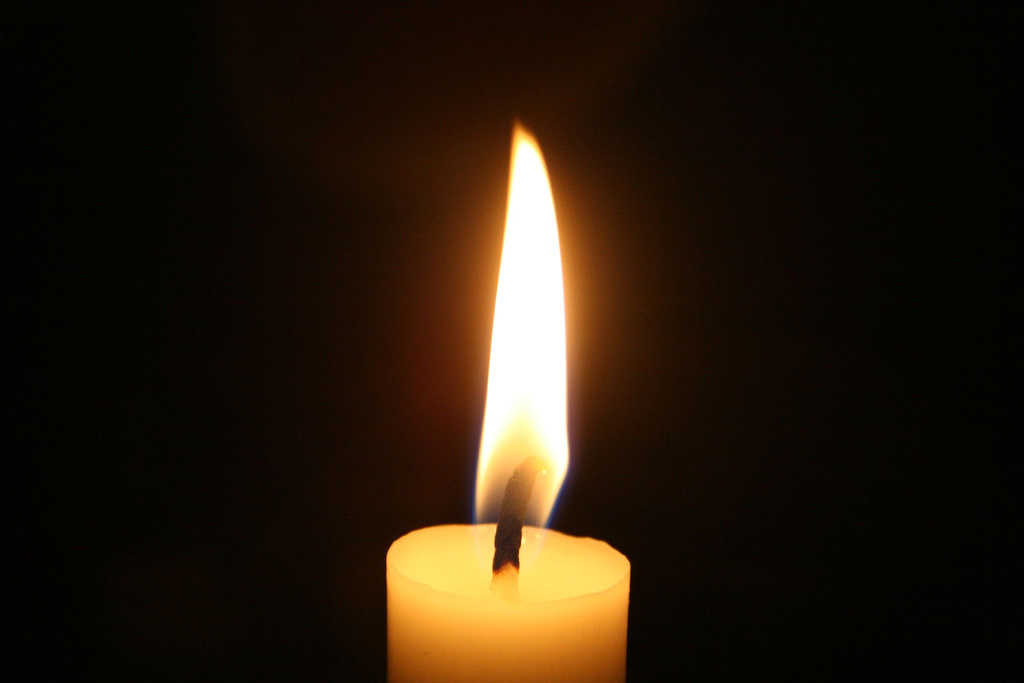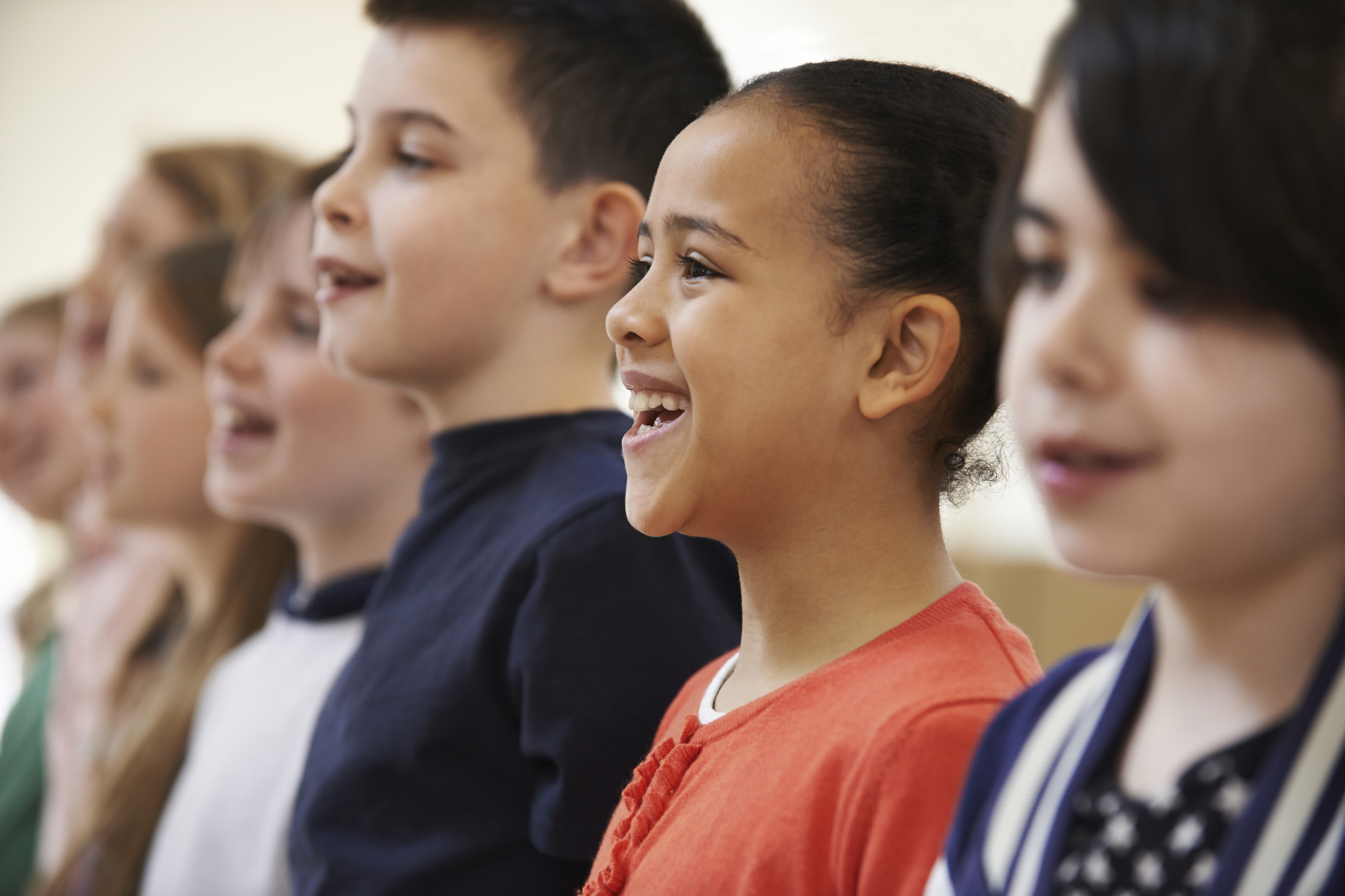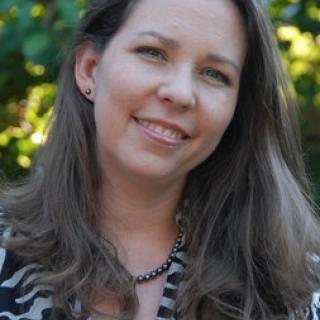
As parents, we work hard to cultivate our kids’ academic learning, healthy habits and self-esteem. We make sure they do their homework and brush their teeth, eat their carrots and share their toys.
But what about the teachings that are harder to quantify? In an age of hectic schedules and an almost fervent focus on achievement, how are we showing our kids how to reach for something greater? How do we expose them to the type of deep, transformative connection to the human spirit from which an almost magical sense of purpose and value can emerge?
Science shows there are indeed measurable benefits when we nurture our children’s innate spirituality. “Spirituality is associated with significantly lower rates of depression, substance use and abuse, and risk taking,” writes Lisa Miller, Ph.D., in her book The Spiritual Child.
But “spirituality” doesn’t necessarily mean organized religion. Miller defines spirituality as “an inner sense of living relationship to a higher power (God, nature, spirit, universe, the creator, or whatever your word is for the ultimate loving, guiding life-force).”
Today’s parents are raising their kids differently than those of previous generations. There is an increasing segment of the population that doesn’t affiliate with any organized religion, and this is especially true in the Pacific Northwest. A 2015 Gallup poll showed that only 24 percent of people in Washington state report attending worship services in a church, synagogue or mosque weekly.
Miller says that all children are “born spiritual” and that, as parents, we can nurture this trait to help our kids thrive. Ways to do this include being open and nonjudgmental when our kids ask spiritual questions, developing spiritual practices, and nurturing our bonds to family and all creatures.
ParentMap spoke with four Seattle-area families who generously shared some of the spiritual rituals they practice with their kids. These parents teach us about what it means to reach and teach toward something greater, even though something greater is different for everyone.

An island in time
The dining table is set, and the platters are filled with steaming salmon and roasted vegetables. The scent of doughy warmth emanates from the two loaves of braided egg bread, or challah, which rest under a colorful, embroidered silk cloth. Standing before a candle-filled silver tray, Elizabeth Davis lights two candles, representing guarding and remembering the Sabbath, in a five-branch brass holder that her grandmother transported from Russia. She then lights one candle for each of her three children. Eighteen-year-old Sophie steps up to light candles in holders from her mom’s bat mitzvah, 12-year-old Hannah lights ones in a colorful, Star of David–shaped set, and 8-year-old Sammy uses a tea light. With the 10 flames flickering and reflecting off the silver tray, Davis passes her hands above the candles three times, sings a prayer in Hebrew and then covers her eyes.
“At that moment, when I cover my eyes, I feel peace,” she says.
And so begins the most important day of the week for the Davis-Jacobs-Rittenberg family: Shabbat, or Sabbath. Beginning at sundown on Friday night, and ending one hour after sundown on Saturday, the Jewish Sabbath is a time to disconnect from the world and reconnect with each other, Davis explains. The ritual continues with the family singing a prayer together and dancing to welcome the Sabbath. Then the parents place their hands on the children’s heads and bless them each in turn. After this blessing, Davis’ husband, Rob Jacobs, often sings “Eishet Hayil” (“A Woman of Valor”), a poem from Proverbs. More prayers are sung before dinner, including the blessing of the fruit of the vine (wine or grape juice), the ritual washing of hands and the blessing over the challah. Once the bread is blessed, salted, sliced and passed to everyone, the eating begins.
Shabbat is often described as “an island in time.” Candlelight and the sound of Hebrew prayers help the outside world to fall away. Computers and TVs are turned off, and cell phones are quieted, leaving this family free to focus on the faces around the table and feel the peace and joy of the Sabbath.
Davis feels that this important practice helps to connect them as a family and to God. “The heart of Judaism is in the home, with family,” she says. But, with three kids, keeping an ancient ritual after a long week is no easy task for two working parents. “One of the kids usually melts down at some point,” Davis says with a sigh. But this busy mom has learned how to streamline Shabbat, planning simpler meals and making the challah dough on Thursday nights.
She also tries to make Shabbat fun. Even though one’s best clothes are traditionally worn at the Friday-night celebration, Davis has relaxed the family dress code. Sometimes they change things up by allowing everyone to wear pajamas, or by serving breakfast for dinner. After the ritual washing of the hands, everyone must be silent until the bread is blessed, which results in lots of silly miming, loud humming and gesticulating.
During Sabbath, the family avoids electronics, instead turning to reading, talking and playing games, and they attend synagogue together on Saturday morning.
Davis and her husband feel that raising their children with a structure of Jewish life gives them a good foundation in an increasingly complicated world.
“We hope by raising kids with a faith tradition and being actively engaged in a faith community, it’ll help us insulate our kids. But I mean insulate, not bubble-wrap!” she says with a laugh. “We try to teach our kids that each individual has value and is irreplaceable, but at the same time, we hope they’re learning that ‘it’s not all about you.’”

The heart connection
Eryn DeFoort stands on her front deck of her Vashon Island home overlooking Puget Sound, as she does every night. She and her 4-year-old son, Mickey, balanced on her hip, breathe deeply of the salt-tinged air and listen to the sounds of the water. After a few minutes, DeFoort asks her son to say goodnight to the moon and stars, and then continues Mickey’s bedtime ritual inside.
“When he is ready for bed, I tell him it’s time to talk to the angels, and he lies down and closes his eyes,” DeFoort says. The two hold hands as Mickey visualizes his guardian angels. Then he talks about his day and what he is thankful for. “We ask the angels to connect us to our family members and to protect them. If there was an argument at preschool, for example, we’ll talk about it and send love to the other children involved.” The conversation continues with a discussion about what Mickey has to look forward to the next day.
DeFoort, a single mom and holistic minister, doesn’t practice any specific religion, but she tries to preserve her son’s natural spirituality, a trait she believes all children are born with. She wants Mickey to connect with something bigger, especially for those times in which he is afraid or confused. They emphasize this by being out in nature, talking about God, being “present” and by practicing a type of deep breathing that they call “belly breathing.”
“Being divorced, I have come up with ways to help him process the separation he feels from me or his dad when we aren’t together,” DeFoort says. “We practice the ‘heart connection,’ which is this invisible string or cord of light that he visualizes connecting him from his heart to his dad.” DeFoort explains that she believes that the “heart cord” is a string of energy that is visible to some, existing between parents and children or between other loved ones. “It’s easy for young children to see this and believe in its efficacy to soothe the ‘missing’ feeling.”
The two have a similar ritual in the mornings to ease into the day. Mother and son sit on the couch and cuddle, look out of the window and talk about what the birds are doing or what the weather is like or how the sun is waking up.
“Those first few moments after a child wakes up set the tone for the day,” DeFoort says. “I’m teaching him to be present in the moment, at least for a few minutes before the rat race begins. I want these practices to be embedded in his consciousness so that Mickey will remember them later in life when he is needing tools to handle stress.”

How we are treating others?
The table in the cozy dining area is covered in a red, white and green tablecloth, and the scent of toasted garlic bread wafts through the air. It is quiet except for the sound of homemade soup bubbling on the stove. The lights are dimmed as a 10-year-old Maggie Hansen lights a lavender “hope” candle in the Advent wreath on the table. Her family then recites a prayer together: Come, Lord Jesus, be our guest, and let these gifts to you be blessed. As parents Mark and Necia Hansen, along with children Maggie and 8-year-old Sammy, begin eating, Mark Hansen says, “Let’s talk about what the candle means.”
It is Advent, the season of anticipation and the Hansen family’s favorite part of the religious calendar. Advent is celebrated during the four weeks before Christmas, during which Christians look forward to the anniversary of the birth of Jesus Christ on Dec. 25. Active in their Episcopal church, the Hansen family celebrates Advent by lighting a candle each night at dinner. Each week has a different theme: hope, joy, faith and peace. The circular gold wire candleholder holds four taper candles, three lavender and one pink. A white pillar candle fills the center. One additional candle will be lit each week (the pink candle is for “joy” week), culminating with the lighting of the white “Christ” candle on Christmas. The children embellish the candleholder with pine branches and other greenery they gather from outdoors, forming the wreath.
In the flickering candlelight, all is warm and peaceful in this suburban Kent home. Dinners during Advent are a nice break from a busy day, say these parents, both of whom work and go to school full- time. The family then discusses the week’s theme, allowing each person to say what the theme means to them.
“On hope week, for example, we talk about our hopes. And sometimes the kids will say what they ‘hope’ to get for Christmas,” Necia Hansen says with a smile. “But that’s OK, they’re kids.”
Mealtime and bedtime prayers are another important ritual, year-round. “If we forget to pray, Sammy will remind us,” Mark Hansen says. They sometimes choose a prayer by rolling a prayer dice — a chunky block of wood with a different prayer inscribed on each side.
Necia Hansen was raised Christian, but not in a church, and Mark Hansen was raised in the Episcopal faith. After the couple had their first child, they felt compelled to find a church community that fit their family.
“I don’t need church for my religion, but I need it for my village,” Necia Hansen says. Necia points out their family motto, “Love each other.” These important words are stenciled onto painted wooden blocks and sit on the mantel in the great room for all to see.
“When the kids are arguing, we’ll say to them, ‘Are you being kind? Are you being loving?’ When they tell us there is a new kid in their class at school, we ask, ‘Were you welcoming?’” Necia Hansen says. “For us, spirituality is more about how we are treating others.”

Raising their voices together
Upon entering the Columbia City Church of Hope, I notice the words inscribed above the door: “Here Find Peace.” Inside, near the front, a group has gathered, sitting on pews and chairs pulled into a circle. Its members invite me to join them, and I am handed a laminated sheet of music. The faces around me reflect the ethnic diversity of this South Seattle neighborhood. As people trickle in and put on name tags, others smile and scoot over to make room. Above us, colorful stained glass windows are set high in the walls of the old building, some partially covered by sheets of wood. In the circle, children nestle with their parents or sit with friends. A sturdy toddler is passed to the arms of another woman, so that the young mother can tend to her other child, who is in a wheelchair. When the Columbia City Family Chorus stands, I am struck by the variety of sizes and ages in the group, preschoolers singing side by side with senior citizens. This feels more like a loving family gathering than a choir practice.
The music is eclectic, ranging from the Japanese “Hotaru Koi,” sung in a round, to Taylor Swift’s “Why You Gotta Be So Mean?” to original compositions by choir leader Kathleen Tracy. Kids and adults sing enthusiastically, led by Tracy on guitar, their joined voices soaring to the high ceiling of the church. When we start singing “Shine,” one of Tracy’s compositions, the singing becomes even more spirited. One of the stanzas perfectly describes this choral group:
Young & old we come here seeking shelter
To heal our hearts, to make a better world
To give ourselves permission to be human
When we know we are enough,
our hearts are lifted up and we can shine . . .
Ambre, along with her husband, CJ, and 8-year-old son, Loren (they asked that their family’s last name not be used), have been singing in the secular community chorus for several years. “It lifts up our hearts and spirits, and reconnects us with ourselves, our family and our community,” Ambre says. For this family, singing is spiritual.
“This is a nice respite from work,” CJ says. ”The focus is on enjoyment, and there are no mistakes.” CJ admits that it can be difficult to fit a weekly activity into a busy family schedule.
“Sometimes I come home from work and think, ‘Do I really want to go out again?’ But I do because I always feel better afterward. It’s about harmonizing with everyone. It makes me feel connected to something greater.”
“Group singing gets us beyond the story and particularity of our individual lives and connects us to the simple truth of being human together,” says Tracy, the chorus director. “When we can slow down enough to make space for community experiences such as these in our lives, it is deeply nourishing. There isn’t much out there for the unchurched, but we are all made to sing.”
While the family doesn’t attend church, Ambre considers her family to be spiritual in other ways. “For me, spirituality is about being inspired and feeling connected to something greater than ourselves,” she explains. “There’s a fundamental sense that whatever happens, it’s OK, because we are a part of something bigger. That’s what I want for our son.”
Fostering a connection to something greater, whether it be faith in God, community, nature or the universe, can give kids something to lean on when we can’t be there. There are as many ways to be spiritual as there are stars in a clear night sky, and they are all beautiful.











